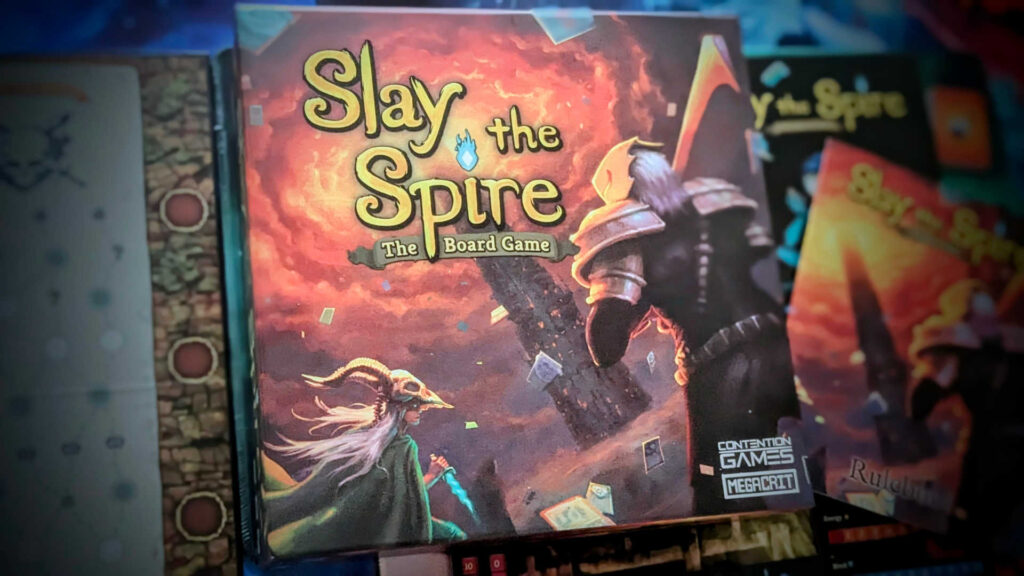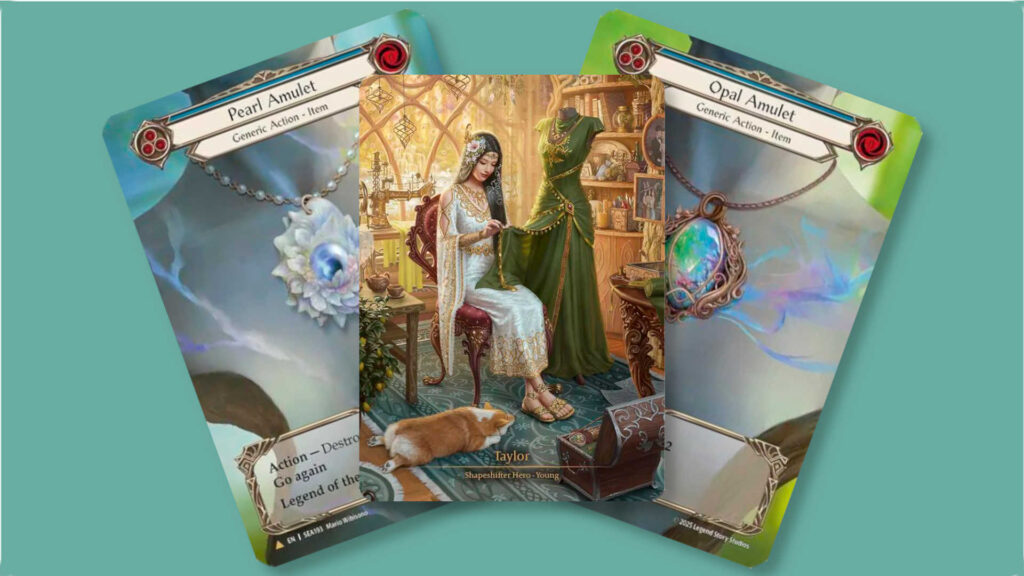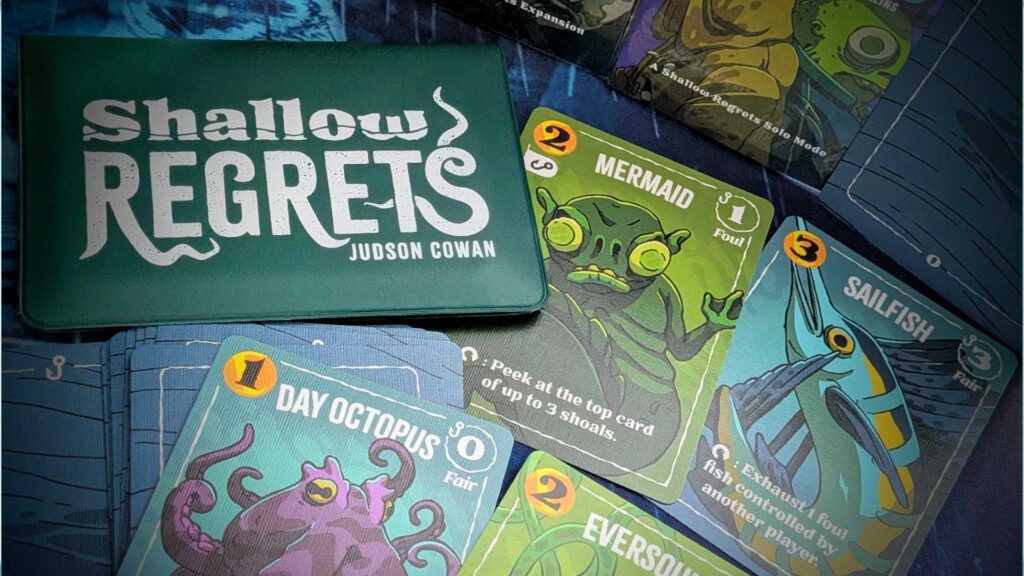Image credits to the author
One of the very best digital deckbuilding games of all time, Slay the Spire from Mega Crit was first released as an Early Access version in 2017 for PC and Mac, before its full release in 2019. Slay the Spire is now available on just about any current platform you can think of (console, computer, and mobile), and it’s become a hugely influential game, kicking off a wave of compelling digital deckbuilding titles that seek to offer an equally compelling experience (with a few coming close, and games such as Monster Train arguably surpassing it, as you’ll see on our list of the best card games on Steam).
Can the tabletop Slay the Spire board game experience (from Contention Games) live up to the sky-high reputation of the original video game? Let’s find out!
Table of Contents
ToggleGetting Started With Slay the Spire: The Board Game
Let’s get one thing out of the way immediately; yes, it does seem as if we’re stretching the definition of “card game” beyond its breaking point by reviewing Slay the Spire: The Board Game. I mean, it’s right there in the game’s title, isn’t it? Board game. Yet the video game itself is a digital deckbuilding game of the sort that we love to cover here on Card Gamer, and the board game adaptation definitely fits squarely into the deckbuilder category, despite having player miniatures (seen below) and a board on which participants attempt to ascend the titular spire.
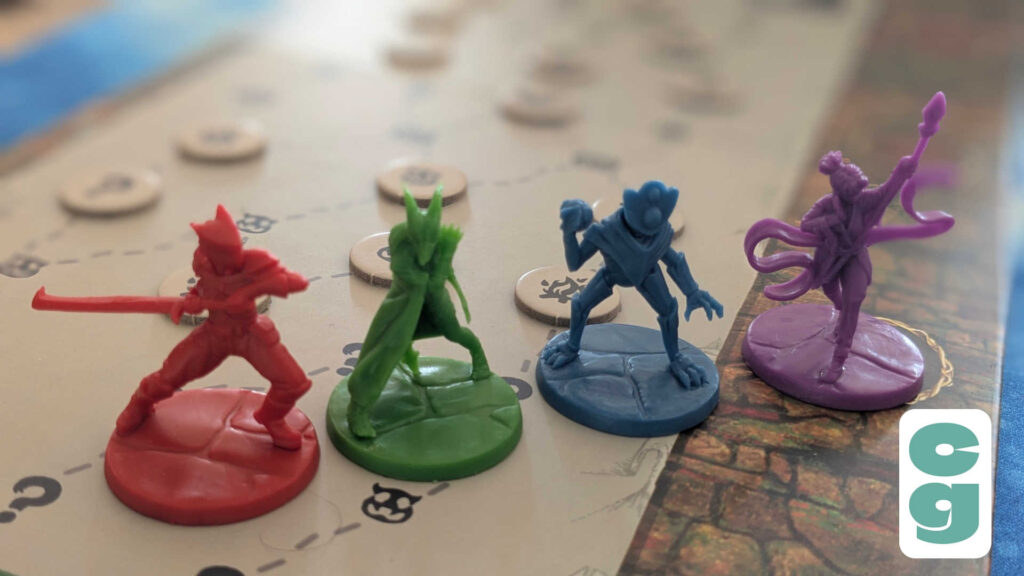
In any case, as a self-contained game, you just need the one box to play Slay the Spire: The Board Game (it’s worth noting that the box is absolutely huge, and packed with content), and it supports 1-4 players. It’s fully cooperative, so even though you can tackle the spire on your own, just as you would in the video game, having players accompany you on your ascent adds an extra dimension that just isn’t there in the original game.
However, it does lack a lot of the immediacy of the video game. Though most deckbuilding video games, Slay the Spire included, quite often have a bit of a learning curve before their systems of deckbuilding and combat click, that’s nothing to getting going with the physical game. I found the rules a little awkward to learn the game with, and it does feel as if there’s some rules which don’t get the emphasis they need, and lots of cases where certain elements just aren’t explained clearly enough.
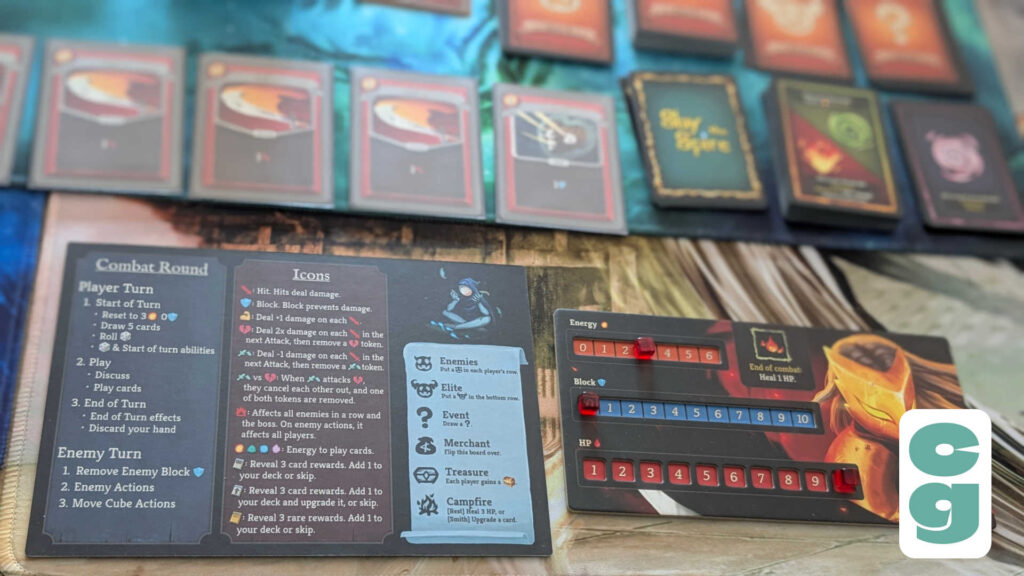
Setting up for your first game is also incredibly daunting and time-consuming, given just how many different decks of cards you’ll need to sort out, with each player also having their own starter and reward decks to keep separate, for their own use.
That said, it does get easier, and once you actually get going, you realize just how smooth and streamlined the experience is, despite the somewhat overwhelming nature of the rules.
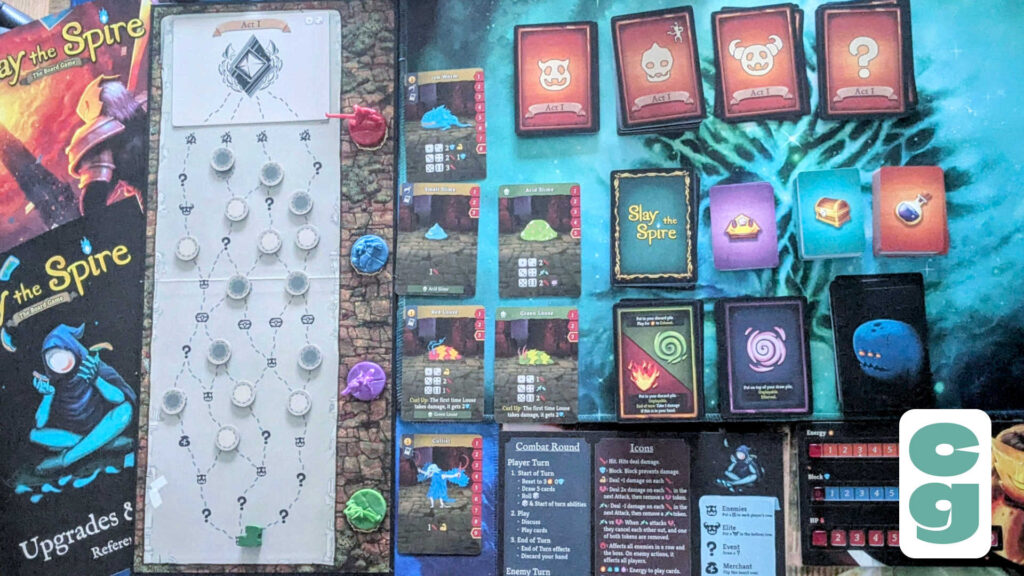
At the beginning of each game, you’ll set up the spire itself using the appropriate board; this will depend on which Act you’re attempting. Act I is first, and this has a double-sided board, which is slightly different on each side, so you’ll randomly choose which side to tackle. Regardless of the board and Act you’re attempting, you’ll need to add a boss card and tokens face down, which you then reveal when you’ve finished preparing the board.
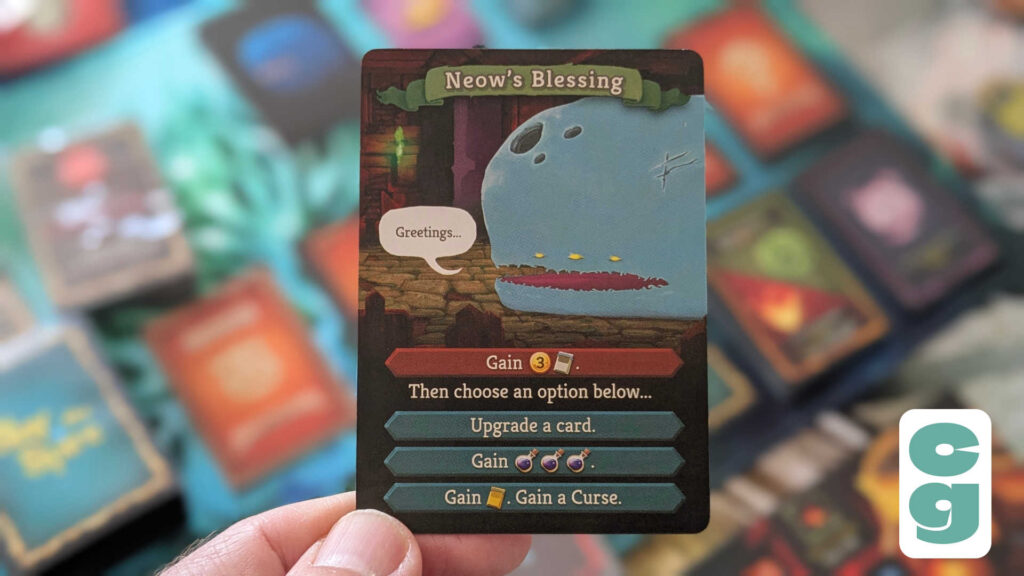
Player miniatures are added to each row on the right side, to match the character that each player has chosen. Each player also takes their starter deck of cards, plus rewards and rare rewards decks too; as these are all double-sided (cards in your deck are upgraded by flipping them over), they all need to be sleeved; thankfully, the game is packaged with a jaw-dropping 450 Slay the Spire opaque sleeves, so this is all taken care of with the game’s included components. Each player also gets a Neow’s Blessing card, so they start with some bonus cards, items, and/or coins.
The Encounters, Elites, and Event decks are shuffled separately and arranged near the play area; the Summons deck doesn’t need to be shuffled, and will be placed near the others. Relics, Potions, and Boss Relics also have their own decks; these will be on sale when players reach a Merchant space on the map, and the Merchant board itself is found on the back side of the player aid board.
As you can see, there really is a lot of setting up to do; we haven’t even covered tokens or individual player abilities here. However, we’ve covered the main points, so let’s jump straight into how Slay the Spire: The Board Game is played.
How to Play Slay the Spire: The Board Game
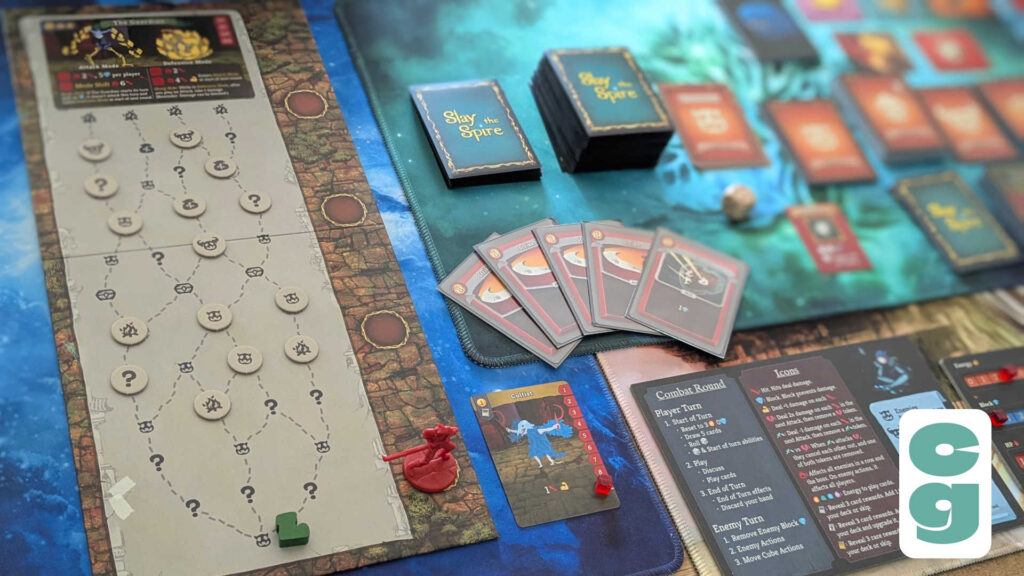
If you’re familiar with the Slay the Spire video game, once you’re underway and playing, it’s remarkable just how closely the tabletop game mimics the structure and experience of the video game, albeit in physical form (and alongside other players too, unless you want or need to go it alone!).
Just as in the video game, players will start at the bottom of a map which features branching paths, and different icons which they’ll stop at along the way.
These can be random Events, Campfires (where healing or card upgrading can be undertaken), Treasure (earning players powerful Relics), or Merchants (with a selection of Relics, Potions, and Rewards that players can purchase, shown below).
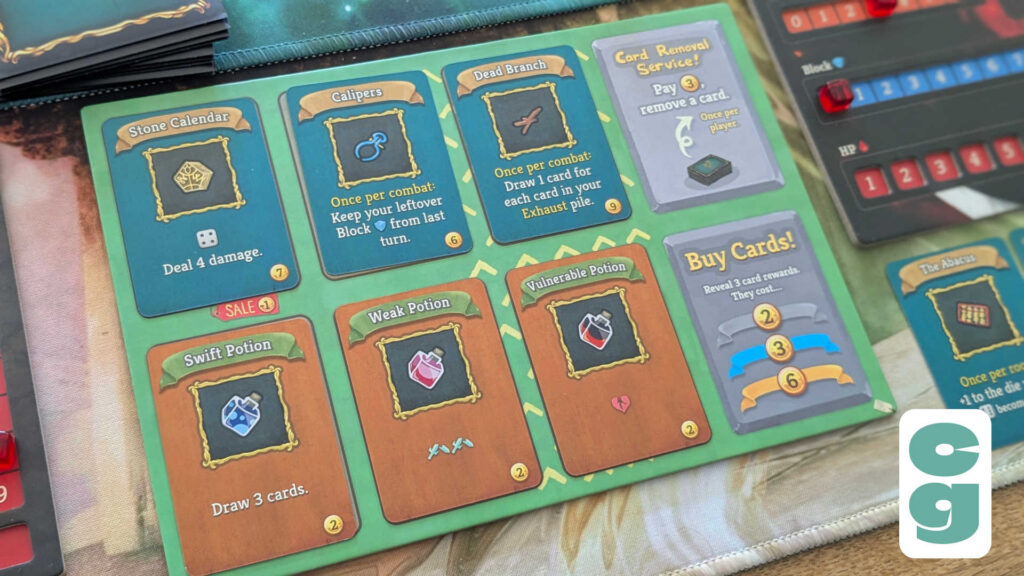
These spaces can also be Encounters or Elites; this, along with the Boss, is where the real core of the game kicks in, with the combat rounds. A player’s starter deck is filled with basic attacks and blocks; these are upgraded and your deck “built” as you gain rewards from defeating enemies or at the aforementioned non-combat spaces.
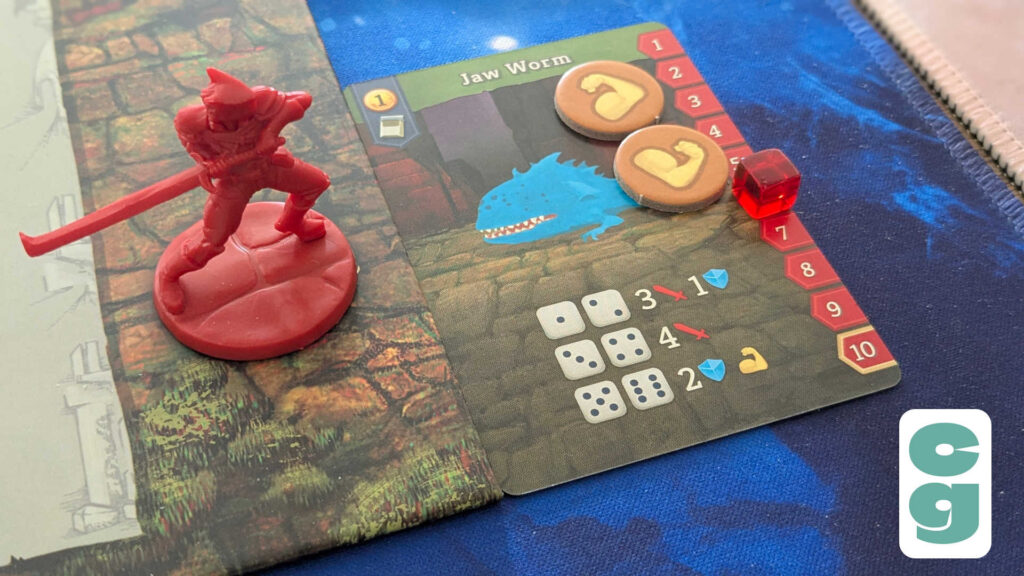
Players will have their own row of enemies who will attack them directly, but attacks from players themselves can be directed at any enemy, in any row (blocks, however, can only be used by the player who plays them). Players can take the steps on their turn simultaneously, and can freely discuss their plans, as well as attack in any order they choose, using the energy on their player board to pay for cards to be used.
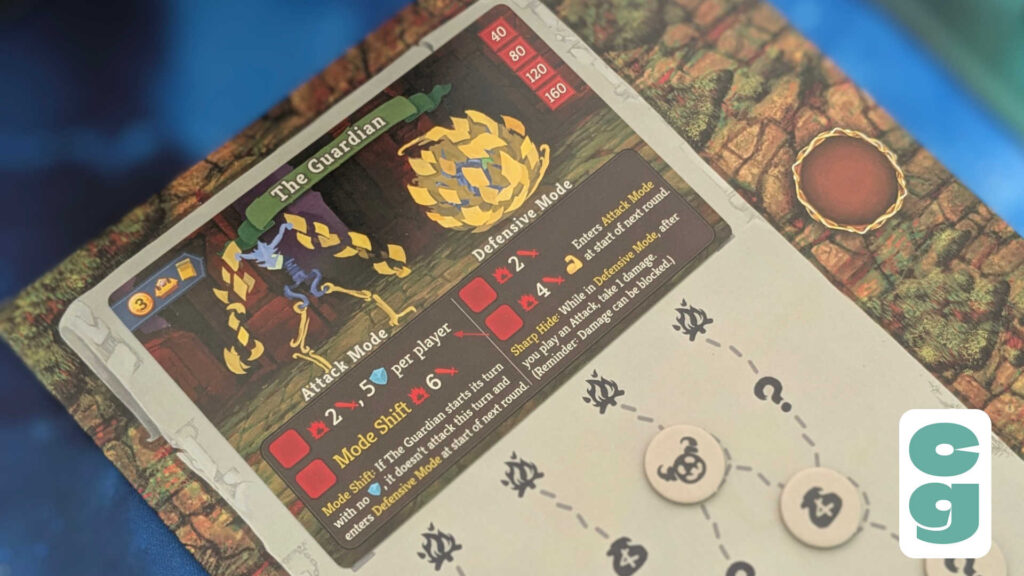
Once a space is dealt with, players continue up their path to the next space, heading towards the Act’s Boss. The Boss is an enemy who attacks all players at once, and has powerful abilities, along with an often very intimidating level of HP.
If any player’s HP is reduced to 0 (even during normal combat), the game immediately ends and the next game begins with a new setup, from the bottom of the spire. Defeat the Boss, however, and the players win the game.
Is Slay the Spire: The Board Game Fun to Play?
There’s a point during the learning process of Slay the Spire: The Board Game where it does feel as if you may be better off just playing the video game. As a digital experience, it’s a much more immediate, pick-up-and-play experience with its bookkeeping and status tracking taken care of for you, without any setup to worry about and save points whenever you choose to put the game down.
Admittedly, the numbers and multipliers used for attacking, blocking, and coins are simplified so as to remove some of the more complicated math, but even so, it can at times feel like there’s a lot to keep track of.
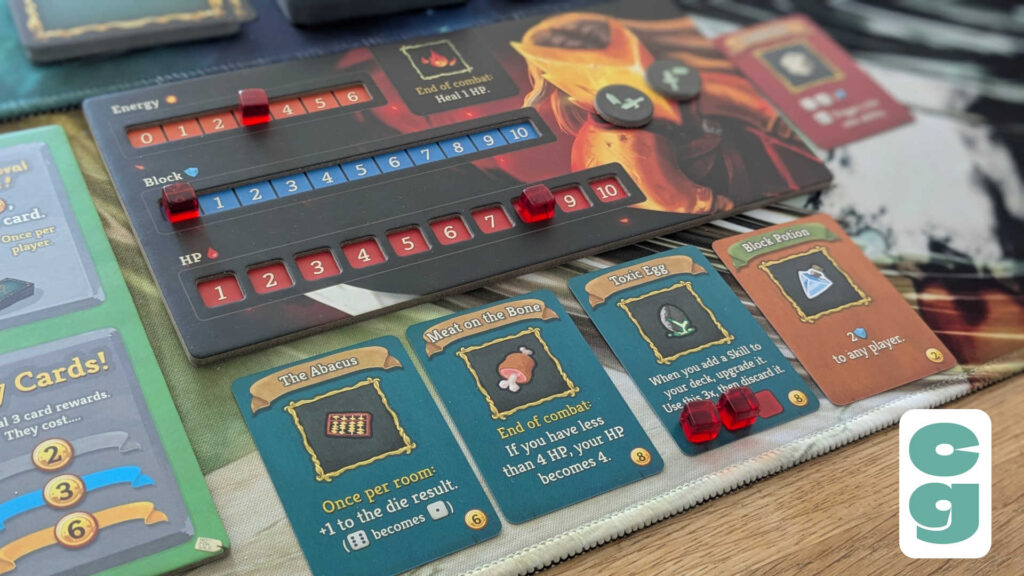
As Slay the Spire: The Board Game does such a remarkable job of recreating the feel of the video game, that thought does persist even when you begin playing; though it’s undoubtedly fun to have Slay the Spire in physical form, with recognizable characters, enemies, events, and other elements, it’s so close that it almost feels pointless to go through the hassle of its play time and the table space it’ll occupy.
Yet Slay the Spire: The Board Game shares the incredibly compelling gameplay of its digital big brother too, and being able to play this cooperatively with friends or family, discussing strategies and having each other to lean on through difficult rounds of combat, is something that you definitely can’t do in the same way in the video game. After just a few Encounters, everything just clicks, and it becomes what feels like an almost peerless experience.
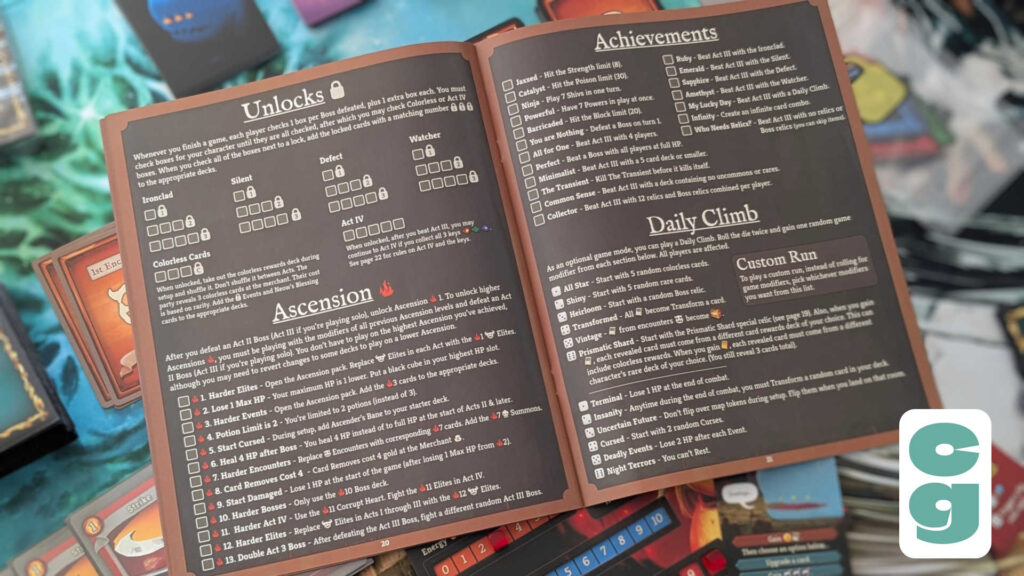
It’s also worth noting that the level of progression and content in the (admittedly very hefty) box is nothing short of stunning. There’s not just multiple Acts to play through, with Ascension levels to also add further challenge, but each time you beat the game, a checklist in the rulebook instructs you what you can unlock next in terms of cards or new game elements.
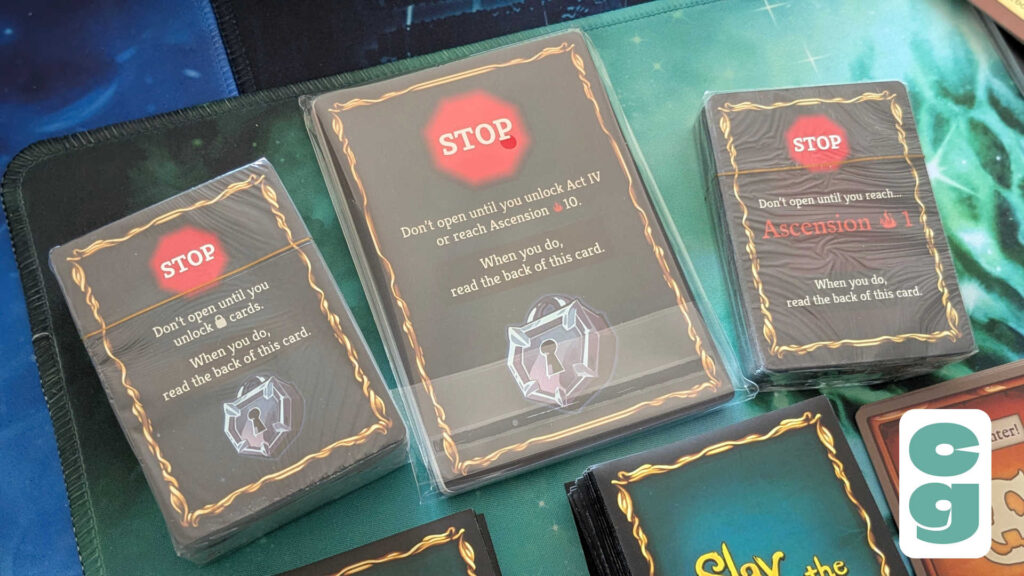
We’ve been very careful throughout this review to only include images from Act I, as there are so many surprises, and so much content that it feels great to discover for yourself; we’ve kept away from spoiling any of it, so that if your interest is piqued and you pick up Slay the Spire: The Board Game, you can enjoy finding each and every one of these elements over multiple playthroughs. You can also save your position with the clever and thoughtful card dividers and storage trays too.
That said, even the basic, Act I game on Ascension 0 can be quite challenging, and you may find yourself making multiple attempts at every Act, on each Ascension level, before being able to proceed. Should you manage to complete the enormous amount of Acts and Ascensions, there’s Daily Climbs (mimicking the regular challenges in the video game) or Quick Start modes; though you may run out of cards and other content to unlock and add to each run, the game certainly doesn’t become unplayable at that point.
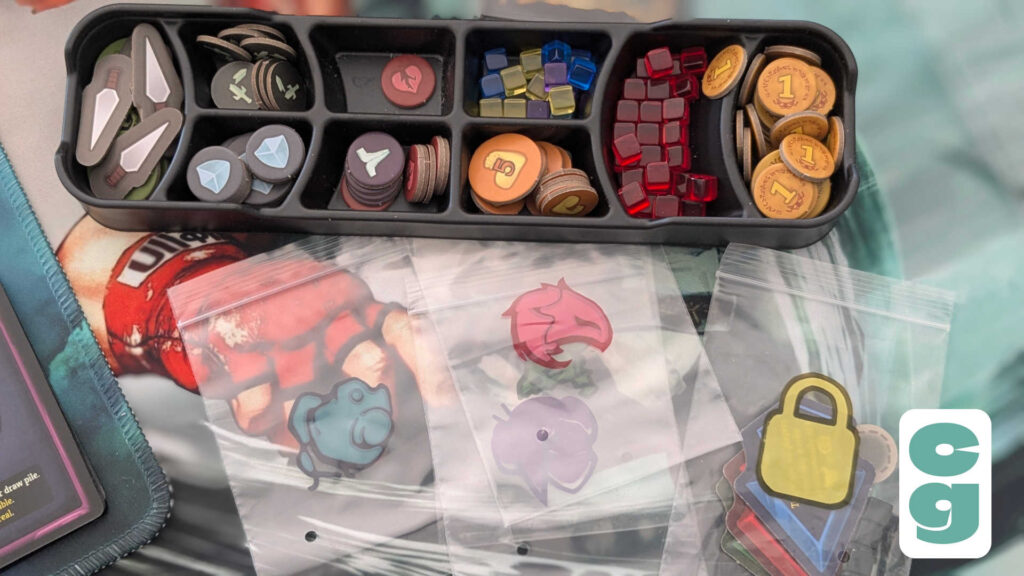
The production values are among the best we’ve ever seen in a game, and trust us when we say we’ve seen plenty of games with lavish design and components. Yet Slay the Spire: The Board Game truly feels like a labor of love, by Slay the Spire fans, for Slay the Spire fans. As you can see from the image above, even the resealable bags have symbols on them to keep each individual character’s components, or components locked until later in the campaign, safe and separate. The care and attention can be felt all the way through the game, from its token storage/sorting tray, to the hundreds of card sleeves and deck slots which make resuming a game, or starting again at a certain point, an absolute breeze. Its look and feel ape the digital title perfectly, and it’s undoubtedly one of the very best, and most faithful, adaptations of a digital game that there’s ever been.
The Card Gamer Verdict
Slay the Spire: The Board Game is initially quite intimidating, with its packed, component-heavy box and rules being quite difficult to get started with. Yet after just a few combat rounds, it becomes just as compelling as the digital deckbuilding game it’s based on.
There’s an incredible amount of replay value and content, very little of which is revealed at the outset. This, coupled with its high production values and thoughtful storage and accessories, justify its high price and the hefty, somewhat overwhelming box.
If you’re a fan of the video game, it’s a no-brainer; however, you don’t need to be a fan of Slay the Spire to enjoy the superb deckbuilding action of Slay the Spire: The Board Game. Its expansive campaign and ever-expanding content provides countless hours of compelling gameplay, all from a single, beautifully packaged box.
Looking for similar games? Why not check out our coverage of other standalone card games?


